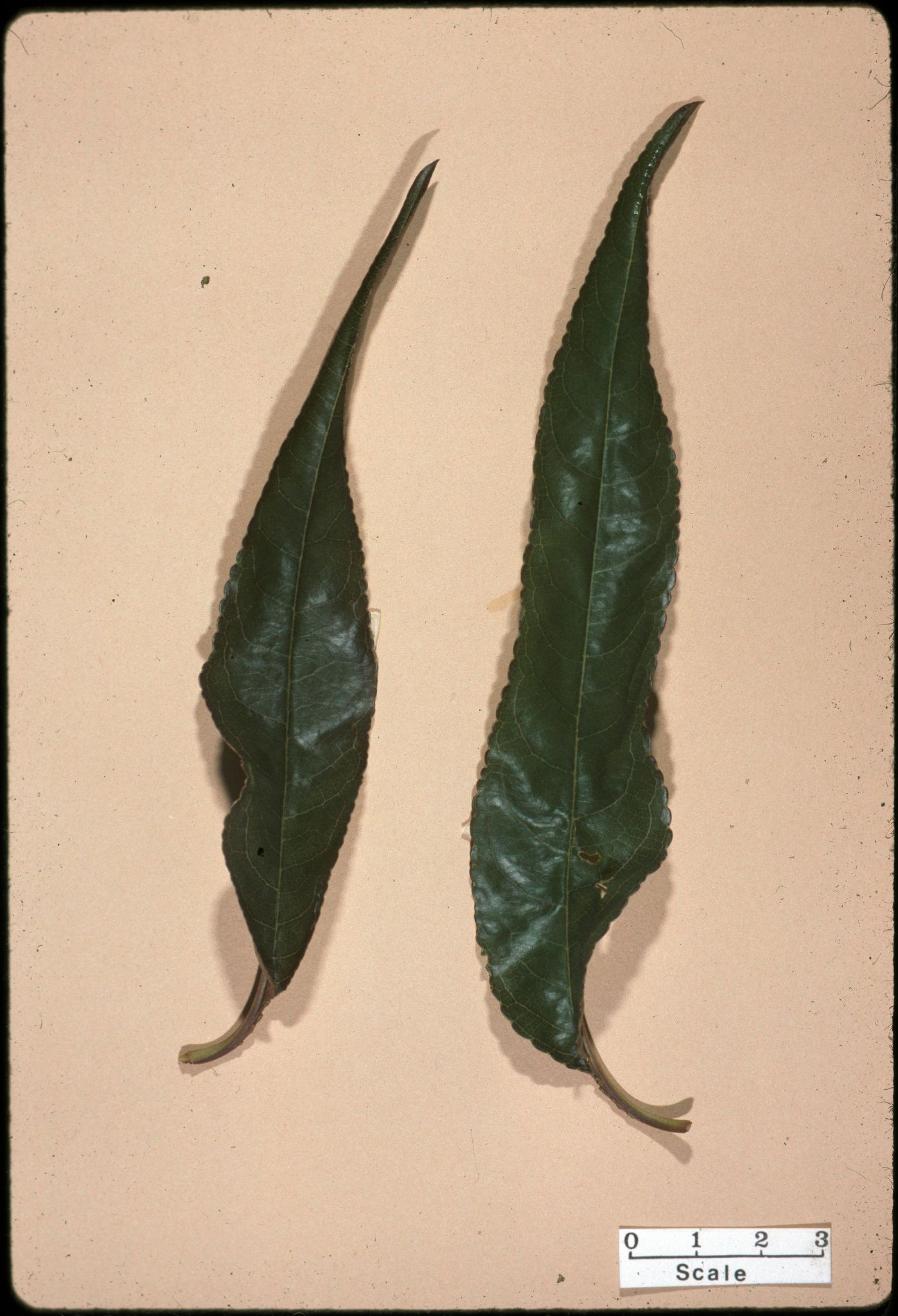
Deciduous tree to 10 m tall. Leaves narrowly elliptic to lanceolate, 7-12 cm long, finely toothed. Flowers stalkless or almost so, in 1s and 2s at the nodes, white to pale pink, 3-5 cm wide. Fruit flattened, ovoid, with a velvety surface and dry flesh covering a pitted stone containing an edible seed. Syn. P. amygdalus Batsch
Three varieties occur in the wild, two of which are important commercially: P. dulcis var. dulcis, Sweet Almond, is grown for its edible seeds; and P. dulcis var. amara, Bitter Almond, is the chief source of almond oil.
Almonds have been selected for both their flowers and their fruit over many centuries of cultivation and many cultivars exist. Almonds grow best in a Mediterranean climate and in Australia they have been grown since settlement.Most growers are in SA (Riverland, N Adelaide Plains, Southern Vales, Langhorne Creek) although the greatest production is in Vic (Lindsay Point, Sunraysia, Robinvale). The major commercial cultivar is 'Nonpareil'. ['California Paper Shell'] 'Chellaston' and 'Johnston's Prolific' are old Australian cultivars that are still grown.
SW Asia, N Africa.
Source: (2002). Rosaceae. In: . Horticultural Flora of South-eastern Australia. Volume 3. Flowering plants. Dicotyledons. Part 2. The identification of garden and cultivated plants. University of New South Wales Press.

Purple leaves and deep crimson double flowers.
Double pink flowers.